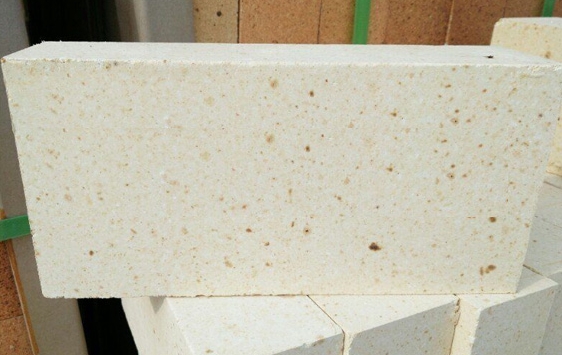- 16
- Sep
High alumina brick
High alumina brick

A. High alumina brick application
Mainly used for lining of blast furnaces, hot blast furnaces, electric furnace tops, blast furnaces, reverberatory furnaces, and rotary kilns. In addition, high alumina bricks are also widely used as open hearth regenerative checker bricks, plugs for pouring systems, nozzle bricks, etc. However, the price of high alumina bricks is higher than that of clay bricks, so it is not necessary to use high alumina bricks where clay bricks can meet the requirements. To
B. Performance of high alumina bricks:
(1) Refractoriness
The refractoriness of high alumina bricks is higher than that of clay bricks and semi-silica bricks, reaching 1750~1790℃, which belongs to advanced refractory materials. The refractoriness is mainly affected by the content, type and quantity of Al2O3, and the refractoriness increases as the content of Al2O3 increases.
(2) Load softening temperature:
Because high alumina bricks have high Al2O3, less impurities, and less fusible glass bodies, the load softening temperature is higher than that of clay bricks. However, because mullite crystals do not form a network structure, the load softening temperature is still not as high as that of silica bricks.
(3) Thermal conductivity:
High alumina bricks have better thermal conductivity than clay bricks. The reason is that there are fewer glass phases with low thermal conductivity in high-alumina products, while the number of mullite and corundum crystals with better thermal conductivity increases, which improves the thermal conductivity of the product.
(4) Thermal shock resistance:
The thermal shock resistance of high alumina bricks is between clay products and siliceous products. The water cooling cycle at 850°C is only 3 to 5 times. This is mainly due to the fact that corundum has higher thermal expansion than mullite without crystal transformation. At present, it is possible to improve the product’s particle structure, reduce the content of fine powder, and increase the critical particle size and particle gradation of the clinker to improve the thermal shock resistance of the product.
(5) Slag resistance:
High alumina bricks have more Al2O3, which is close to neutral refractory materials, and can resist the erosion of acidic slag and alkaline slag. Because of the inclusion of SiO2, the ability to resist alkaline slag is weaker than that of acidic slag. In addition, the slag resistance of high alumina bricks is also related to the stability of the product in the slag. Generally speaking, after high-pressure molding and high-temperature firing, products with lower porosity have higher slag resistance.
The parameter index of high alumina bricks varies widely, and its physical properties should be determined according to the grade of the product and the place of use when it is used. At present, the general high alumina brick standard GB2988-88 is generally adopted. If you need to use super high alumina bricks, please refer to GB/T 2988-2012 standard physical and chemical indicators. The index of high alumina brick is the basic performance requirement. According to the conditions of use, creep resistance and thermal shock resistance should also be considered. The chemical resistance directly depends on the A12O3 content and porosity.
(6) Physical and chemical indicators:
| Rank/Index | High alumina brick | Secondary high alumina brick | Three-level high alumina brick | Super high alumina brick |
| LZ-75 | LZ-65 | LZ-55 | LZ-80 | |
| AL203 ≧ | 75 | 65 | 55 | 80 |
| Fe203% < | 2.5 | 2.5 | 2.6 | 2.0 |
| Bulk density g/cm2 | 2.5 | 2.4 | 2.2 | 2.7 |
| Compressive strength at room temperature MPa> | 70 | 60 | 50 | 80 |
| Load softening temperature °C | 1520 | 1480 | 1420 | 1530 |
| Refractoriness °C> | 1790 | 1770 | 1770 | 1790 |
| Apparent porosity% < | 24 | 24 | 26 | 22 |
| Heating permanent line change rate% | -0.3 | -0.4 | -0.4 | -0.2 |
